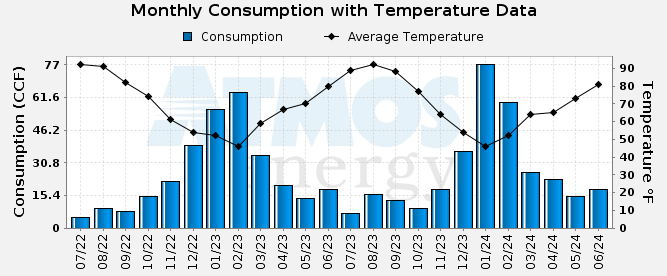Electrical Generators
If I had the money, I'd probably choose GERERAC or Cummins-Onan, they pretty
much do a turn-key job.
But, If you still wanted to understand options, pros and cons, terminology. so
read on.
07/04/2024
Currently I like the Westinghouse WGen1450TFc portable generator
403 has 125 Amps @ 240 Volts (both phases mains in breaker box).
Generator selection:
Also note: your generator must be 60Hz if you live in the USA or Canada.
Sizing: Number of KW @ 120V and 240V your house requires.
A Watt = 1 Amp * 1 Volt. A Kilowatt = 1000 Watts. A Kilovolt = 1000 Volts.
Your house's power requirement is in Kilowatts, a generator's output power
is in KVA, you have to consider the generator's efficiency.
Note: you can have a new breaker box installed as part of this. That would
re-partition the electric draw so your gen would only need to supply
critical load items.
Generators have two ratings for each fuel type: Peak power, and Running
power. The peak power covers things like starting your AC compressor, etc.
while running power is the power required after starting the motor.
Also, you will hear about KW (Killowatts) vs KVA (Killo Volt Amp) which
takes your generator's power factor (effeciency) into account. Power Factor
is a number between 0 an 1. You multiply your generator's KW by it's
Power Factor to get it's KVA. International standard: PF = .8
You should never run you generator for more than 30 Mins. at max power, size
it Load * 1.25 to get required .
They're saying, buy about 125% of what your house currently needs. Remember
you may add electrical devices later.
Another note: your backup doesn't need to carry the whole house, just the
basics like: AC/heater, fridge, maybe electric stove, washer dryer, lights.
There are several sizing web pages:
genpowerusa how-to-calculate-commercial-generator-size
electricgeneratorsdirect
generatormart.com
wpowerproducts.com generator-sizing-guide
Cummins Diesel
cummins.com generator-size-calculator
Fuel: What kind of fuel does it use, Run Times for 15KW gen
Remember, in the event of a long blackout (> 2 days), if you are using
gasoline or propane, the gas stations may not have power, and propane truck
may have to come a long way, or not have fuel either.
Generators come with either single fuel, dual fuel or tripple fuel.
- Gasoline: most effective (yields the most KW), gets about 10 Hr for 11 gal.
of gas, dangerous to store, needs an elevated tank, or in-ground with
electric fuel pump. If you have an above ground tank, it doesn't need
to be as high as a tractor, or truck fuel tank. A 150 gal. tank would
run my gen for abot 146 Hrs (>6 days).
- Diesel: Some of the most powerful backup generators available for
heavy-duty appliances. They use diesel fuel, which can be expensive and
challenging to store and often creates more noise and pollution.
Diesel is safer to use/store than gasoline.
BTW: Diesel generators are available up into the megawatts.
- Propane: 2nd most effective, easier to store, about 2-1/2 or 3-1/2 gal. /Hr.
above or in-ground tank, Im thinking In ground is best, cost $150 extra.
- Natural Gas: least effective, Gets 10 Hr run time of 12-14 gal.
A 22 kW Generac generator uses about 281 cubic feet (3.67 gal.) of natural gas per hour running at full power.
May need larger service pipe (meter??) Of course if you have any fuel
tank visible, some folks will try to steal it, so take precautions.
Placement: Outside, under a covered area with all sides open. Your generator
must get engough cooler air to cool itself. It should not be exposed to rain
or snow.
Transfer Switch: Utility-to-generator switch. A switch that selects which
power source your house is using. Also guarantees your generator is NEVER
connected to the utility's lines.
3 Kinds:
Manual: you have to go to the switch and throw a switch.
Automatic: Senses when utility power goes away, starts the generator,
and switches your house over to the generator's output.
Non-Automatic: You must trigger the switch operation, via a push-button.
Calculations
Power:
Volts x Amps = Watts
Fuel consumption (gallons) = amount of fuel / total electricity produced (Wh or kWh)
Wattage Requirements of Appliances
| Appliance
| Rated (Running) Watts
| Starting Watts
|
| Dishwasher | 1300 | 1800
|
| Washing Machine | 1200 | 2300
|
| Refrigerator/Freezer | 700 | 2200
|
| Light Bulb | 60-75 | 0
|
| Microwave | 600-1000 | 0
|
| TV | 500 | 0
|
| Toaster | 900 | 0
|
| Vacuum | 1440 | 2500
|
| Coffee Maker | 1000 | 0
|
| Blender | 300 | 800
|
| Clothing Iron | 1500 | 0
|
| Dryer | 5400 | 7000
|
| Toaster Oven | 1200 | 0
|
| Curling Iron | 1500 | 0
|
| Space Heater | 2000 | 0
|
| Laptop | 50-300 | 0
|
| 20” Box Fan | 200 | 350
|
From Atmos: mouthly usage for our house, Jul.2022 - Jun.2024.
(CCF) is hundreds of Cubic Feet.
For billig: convert CCF into therms.
One therm is equal to 100,000 British thermal units (BTU)
Multiply your CCF use by the BTU factor.
BTU factor may vary from month to month, so please refer to your bill for the actual factor being used.
Natural Gas Cost (40-50% of your annual bill)
calculated by multiplying your gas usage by the average cost per therm we pay to purchase gas supplies.
Delivery Charges (45-55% of your annual bill)

